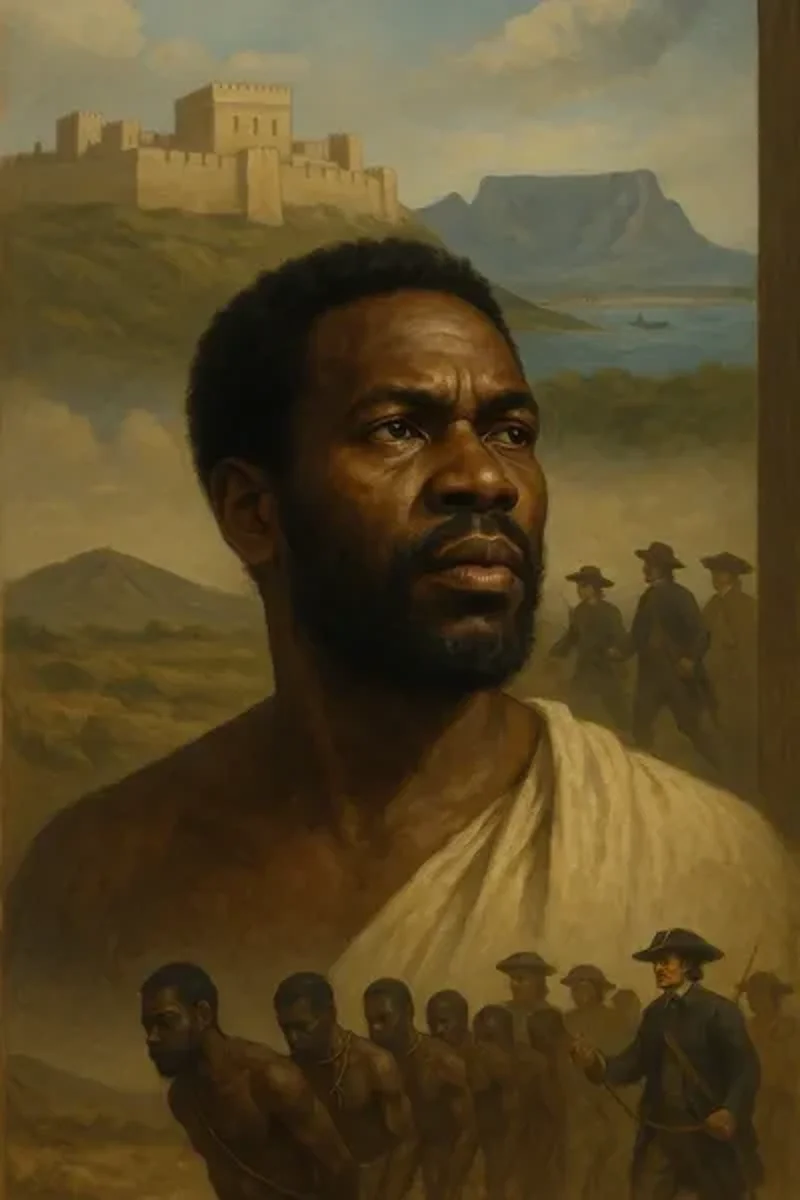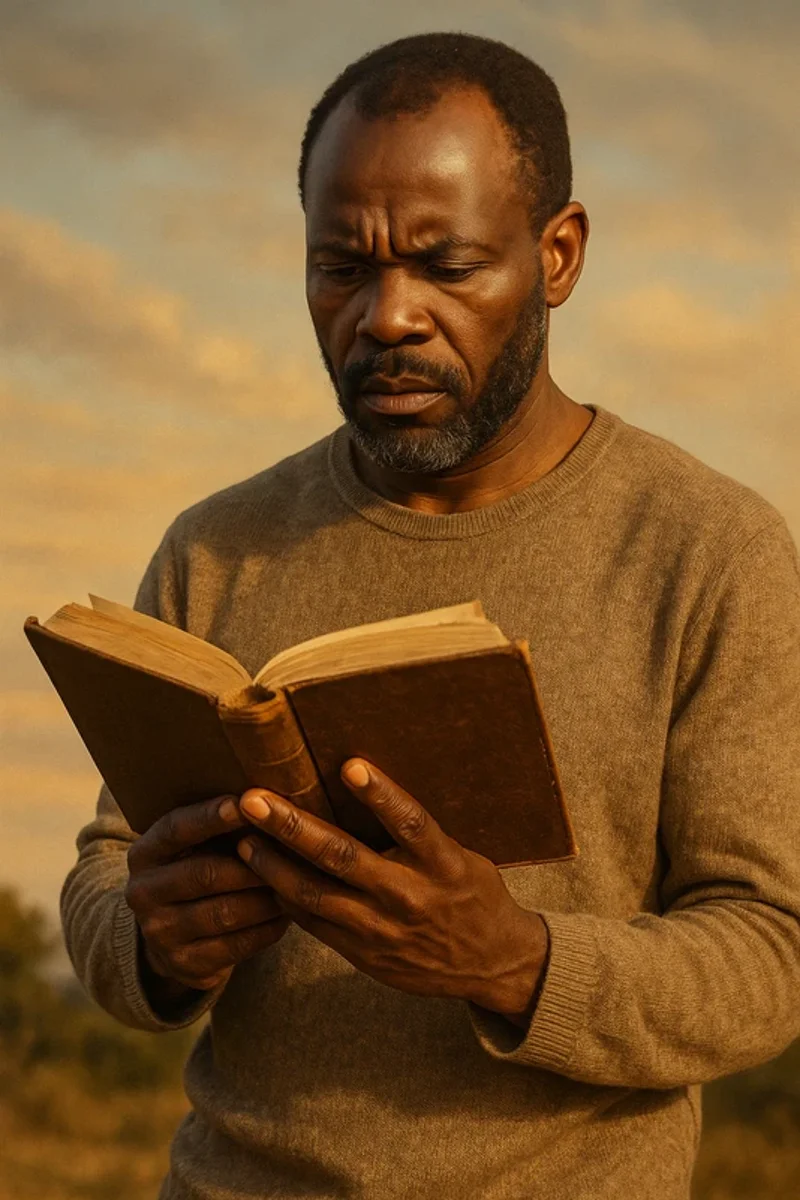The True Identity of Yashar’al
"African" Descendants and the Covenant Land’s Restoration
African Descendants and the Covenant Land’s Restoration
Awaken, O nations, to the unshakable revelation preserved in the Set-Apart Scriptures, verified by apocryphal prophecy, historical documentation, genetic markers, and enduring cultural Amat. The Twelve Tribes of Yashar’al are African and African-descended peoples — those who bear the covenant name Ibriym yet have endured the prophetic byword “Nigger” Debarim 28:37.
The original covenant land, Canaan/Yarushalayim, stands desolate due to ancestral rebellion — but prophecy declares it will be rebuilt by the hands of Gentiles YashaYahu 60:10, awaiting the return of the true heirs.

Arzareth— described in 2 Esdras 13:40–46 as a land “where never mankind dwelt” — was a divinely appointed refuge for the Ten Tribes of Yashar’al who fled from Assyrian captivity. This hidden land was given by YaHU’aH as a place where they could preserve the Torah and keep the statutes they failed to uphold in their homeland. While scholars and seekers debate the precise location of Arzareth, the Scriptures are clear: it was a land uninhabited, far removed from Gentile nations, and ordained for prophetic concealment.
However, Africa — especially Sub-Saharan Africa — became the broader preservation ground where remnants from all Twelve Tribes were eventually scattered, regathered, and multiplied after successive exiles. Torah-keeping customs, naming traditions, and prophetic patterns remained deeply embedded throughout this region — from the rivers of Kush to the coasts of Ghana, from the mountain valleys of South Africa to the highlands of Ethiopia.
Meanwhile, America — the modern Mystery Babylon — became the land of captivity for Yahudah and Binyamin, forcibly scattered by slave ships during the Sub-Saharan and Transatlantic slave trades — fulfilling the curses of Dabarim 28:68.
Now, the Great Awakening has begun — not by the will of man, but by the power of the Ruach ha’Qodash — stirring the scattered of Yashar’al from every nation. We now stand on the threshold of prophetic regathering and righteous vengeance, just as it is written in 2 Esdras 15:34–37.
Colonial myths are collapsing. Roman religious fables are being exposed. And from Arzareth’s prophetic concealment to Babylon’s captivity, the evidence is undeniable: the African peoples are Yashar’al — chosen to rise, return, and restore the everlasting covenant.
Shalum.
African Descendants and the Covenant Land’s Restoration
The Twelve Tribes: African Roots and Prophetic Identity
The twelve tribes of Yashar’al, descended directly from Ya’aqob, are unequivocally African and African-descended peoples. Though our true identity has been obscured by centuries of exile, slavery, and deception, it remains unbroken — sealed by the baraks and curses outlined in the Set-Apart Scriptures, especially in Dabarim 28. These covenant markers, coupled with our enduring cultural resilience and the clear arc of prophetic fulfillment, reveal the truth of who we are.
Shir haShirim (Song of Songs) 1:5–6 declares:
“I am black but comely… because the sun has tanned me.”
This is not poetic metaphor — it is a declaration of identity, describing the physical features of the Bantu and related diaspora peoples who remain visibly marked by the African sun. These words echo across generations, confirming that the people of Yashar’al were — and still are — a melanated, scattered, and chosen people.

The stark prophecy of Dabarim 28:68, stating, “YaHU’aH shall bring you back to Mitsrayim [a place of bondage, metaphorically Egypt] in ships… and there you shall be sold to your enemies as male and female slaves,”
finds its undeniable fulfillment in the horrors of the Sub-Saharan slave trade — both the transatlantic trade (1441–1888, estimated 12–15 million enslaved) and the often overlooked Indian Ocean trade (800–1900, estimated 3–5 million) — which specifically tore Yahudah (identified with the Igbo and African Americans) and Binyamin (identified with the Jamaican Maroons) from their African homeland.
Furthermore, the timeline of affliction foretold in Barashith (Genesis) 15:13–14 resonates powerfully with the 400 years of oppression experienced by African Americans from approximately 1619 to 2019 — an era marked by severe bondage, systemic oppression, and trauma, yet culminating in undeniable cultural richness and a rising spiritual awakening across scattered Yashar’al.
Their distinct tribal identities — deeply rooted in the patriarchal baraks and prophetic declarations recorded in Barashith 49 and Dabarim 33 — continue to shine through in the unique languages, traditions, and struggles of various African and diaspora groups. These identities are not speculative—they are encoded in prophecy, preserved through suffering, and now revealed in the appointed time.
Historical Evidence: The Promise of Ya’aqob
Covenant and Corruption: Cultural Practices Beyond Torah
While many African tribes preserve undeniable signs of Hebraic identity — such as circumcision, monotheism, and moral codes — centuries of exile, colonization, and cultural blending introduced practices not aligned with Torah. These distortions
came through idolatry, ancestral worship, syncretized rituals,
"Star of David" and foreign religious influence.
- Vodun/Voodoo among the Ewe (Gad): Though originally rooted in reverence for a single Creator (Mawu), the system became filled with spirit intermediaries (Trowo), contrary to the commandment: “You shall have no other mighty ones before Me.” — Shemoth (Exodus) 20:3
- Ifá divination among the Yoruba (Dan): This complex system of spiritual consultation contains echoes of prophetic practice but lacks the Ruach Qodash (Set-Apart Breath) and becomes a form of unauthorized spiritual access. Torah says: “There shall not be found among you anyone who makes his son or his daughter pass through the fire, or who practices divination, or is a soothsayer, or an enchanter, or a witch, or a charmer, or one who consults spirits, or a wizard, or a necromancer. For all that do these things are an abomination unto YaHU’aH.” — Debarim (Deuteronomy) 18:10–12
- Ancestor reverence across several tribes: From Ashanti to Zulu, honoring ancestors has sometimes replaced direct obedience to YaHU’aH, despite His clear instruction: “You shall fear YaHU’aH your AL’uah and serve Him, and shall swear by His Name. You shall not go after other mighty ones, of the mighty ones of the people which are round about you.” — Debarim (Deuteronomy) 6:13–14
- Sabbath and Feast replacement: Even among Torah-linked groups like the Lemba or Beta Israel, colonial disruption and missionary distortion led to the abandonment of the Appointed Times, which were commanded: “These are the Feasts of YaHU’aH, set-apart convocations, which you shall proclaim in their seasons.” — Wayyiqra (Leviticus) 23:1–2
Despite these deviations, the prophetic remnant is awakening,
and the promise remains:
“And it shall come to pass, when all these things have come upon you — the blessing and the curse, which I have set before you — and you shall call them to mind among all the nations, wherever YaHU’aH your AL’uah has driven you, and shall return unto YaHU’aH your AL’uah, and obey His voice… then YaHU’aH your AL’uah will turn your captivity and have compassion upon you, and will return and gather you from all the nations, wherever He has scattered you.” — Debarim (Deuteronomy) 30:1–4
For deeper insight into the prophetic migration and refuge in Arzareth,
see the dedicated Arzareth section here.

